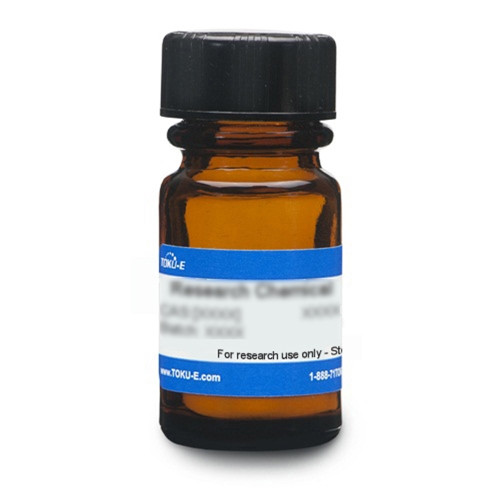Tizoxanide is a metabolite of Nitazoxanide. It is an antiparasitic agent that can inhibit anaerobic bacteria, protozoa, and a range of viruses including hepatitis B and C. It is being explored for activity against SARS-CoV-2, the causal agent of COVID-19 disease.
| Mechanism of Action | Tizoxanide is the active metaboliite Nitazoxanide. This anthelmintic agent is able to inhibit viral replication, including hepatitis B and C viruses. |
| Spectrum | Tizoxanide is effective against parasites (Leishmania mexicana, Trypanosoma cruzi), influenza A, hepatitis B and C. Tizoxanide is active against anaerobic bacteria, protozoa, and a range of viruses. It has both in vitro and in vivo activity against a variety of anaerobic Gram-positive and Gram-negative bacteria as well as aerobic Gram-positive bacteria. It has also been shown to inhibit Mycobacterium tuberculosis. |
| Microbiology Applications | Nitazoxanide has shown in vitro activity against against SARS-Cov-2. Vero cells were treated wtih Tizoxanide (TIZ) to unveil possible mechanisms for its antimicrobial effect, using a label-free proteomic approach (LC/MS/MS) analysis to compare the proteomic profile between untreated- and TIZ-treated cells. It can lower cell metabolism and RNA processing and modification. The decreased levels of FASN, HNRNPH and HNRNPK with the treatment appear to be important for antiviral activity. |
| Eukaryotic Cell Culture Applications | The protein binding ability of Tizoxanide in goat plasma, albumin, and alpha-1-acid-glycoprotein were investigated in vitro. The protein binding percentage (at 4 ug/ml) was > 95% in plasma and albumin solution, compared to only 49% in alpha-1-acid-glycoprotein solution, likely due to its acidic property (Zaho et al, 2010). The concept of 'drug repositioning'- using known molecules for new indications, was used to screen 1600 compounds in a high-throughput screening approach using glucose-deprived multicellular tumor spheroids (MCTS) to identify compounds that target dormant cancer cells in solid tumors. Since cancer cells in low glucose environments depend on oxidative phosphorylation rather than solely on glycolysis, continuous exposure is needed, and of the five compounds with MCTS activity, Nitazoxanide is the only one that reaches high plasma concentrations. Nitazoxanide activated the AMPK pathway and down-regulated c-Myc, mTOR, and Wnt signaling, suggesting it could be a candidate for anti-cancer applications (Senkowski W et al, 2015). |
| Molecular Formula | C10H7N3O4S |
| References |
Korba BE et al (2008) Nitazoxanide, tizoxanide and other thiazolides are potent inhibitors of hepatitis B virus and hepatitis C virus replication. Antiviral. Res. 77(1):56-63 Nitulescu GM et al (2020) Comprehensive analysis of drugs to treat SARS‑CoV‑2 infection: Mechanistic insights into current COVID‑19 therapies (Review). Int J Mol Med 46:467-488 Senkowski W et al (2015) Three-dimensional cell culture-based screening identifies the anthelmintic drug Nitazoxanide as a candidate for treatment of colorectal cancer. Mol Cancer Ther 14(6):1504-1516 Zhao Z et al (2010) the pharmacokinetics of nitazoxanide active metabolite (Tizoxanide) in goats and its protein binding ability in vitro. J. Vet. Pharmacol. Ther. 33(2):147-153 Yamamoto KA et al (2020) Quantitative proteomic analysis of the Tizoxanide effect in vero cells. Sci Rep 10:14733 |


